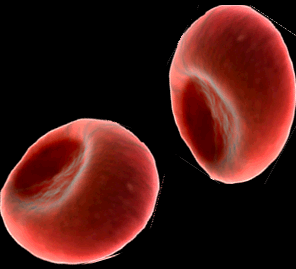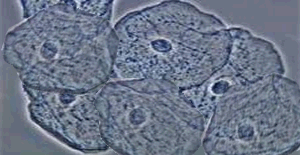
Plant cells have thick cell walls and chloroplasts. Such structures are not present in animal cells.
Unicellular organisms such as the paramecium and euglena can survive in hostile environments which would prove deadly for Human cells.
A number of cells are listed below.
Muscle cells have one task only and that is to shorten when stimulated by a signal, thus providing a force which causes movement.
Red blood cells carry vital oxygen from the lungs to all parts of the body and help to remove carbon dioxide form the tissues.
White blood cells seek and destroy foreign invaders that happen to be present inside the body.
Nerve cells are responsible for communication within the body and for processing information. Their shape is obviously suited to the task of making connections with other nerve cells.
The cell is more complex than we can tell by simply looking through a microscope. A variety of complex chemical reactions take place at all times building new structures, dismantling these structures such as the cytoskeleton.
View the video on the right to gain a small appreciation of the complexity of the cell and what a busy environment exists withing it.
Cells that perform an identical task often aggregate to form tissues. A collection of tissues is called an organ. For example,nerve tissue collectively forms the brain, while cardiac muscle tissue and connective tissue form the heart.
All cells in the Human body depend on each other for survival. For example, if white blood cells do not do their job, infection will kill the organism as will a lack of oxygen if the red blood cells do not perform their role efficiently.
3) a) What is the role of the red blood cell?
b) Why has the red blood cell no need for a cell nucleus?
c) The donut shape of the red blood cell gives it a greater surface area. Why is this important?

